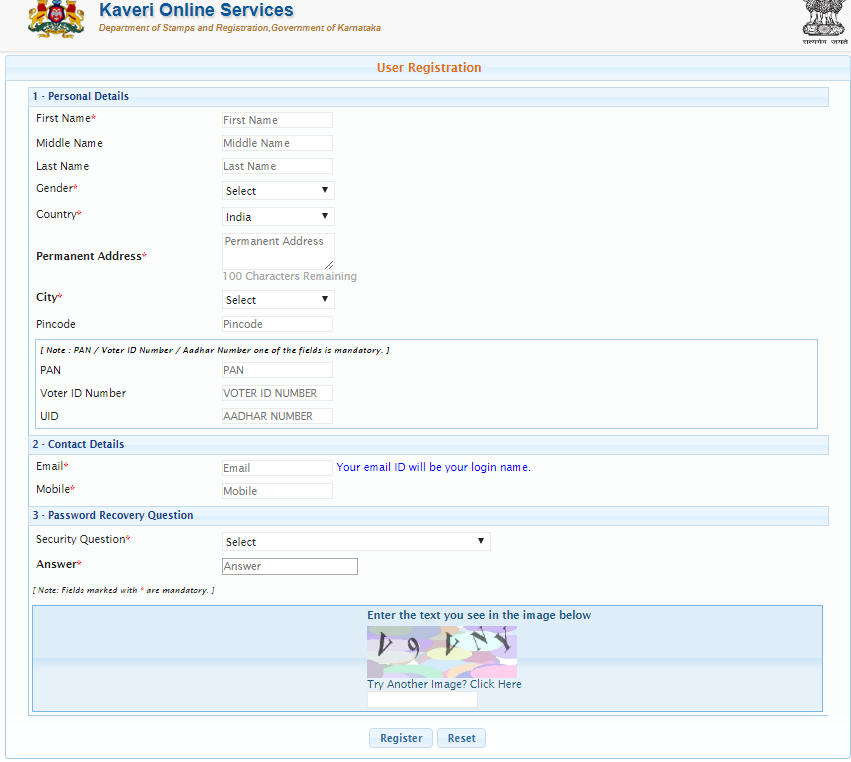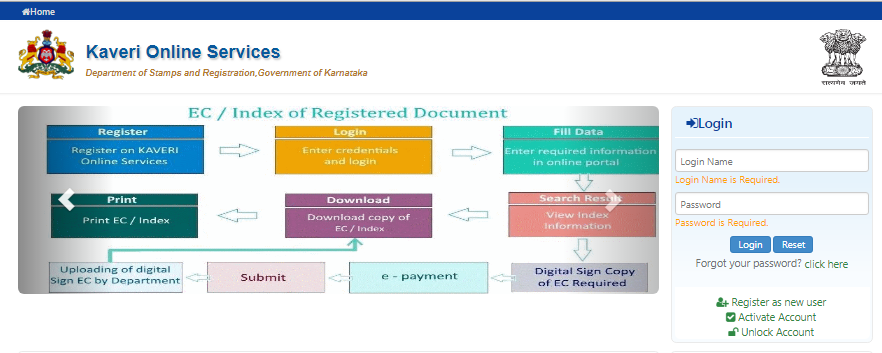 Last updated: February 26th, 2020 3:51 PM
Last updated: February 26th, 2020 3:51 PM
Karnataka Encumbrance Certificate
Encumbrance certificate shortly called as EC is one of the most important documents to validate the title of a property. Encumbrance Certificate record assures that the property is free from any legal or monetary dues such as uncleared loans or mortgages. Thus an individual procures this document as an evidence of free title and ownership. In this article, we look at the procedure for obtaining Karnataka encumbrance certificate in detail.Importance of Obtaining an Encumbrance Certificate
- Encumbrance certificate is a vital document for buying any land or property in India as it is an evidence of ownership title. Hence transferring of property requires an EC.
- Apart from property purchase, Encumbrance certificate must be furnished when applying for a loan against the property in any banks or financial institutions as it confirms that the property is free from any legal liabilities.
- EC is an important document to get mutation of property (Khata Registration / Khata Transfer / Patta) done.
- This certificate requires to update the land tax records if the property or land tax is not paid for more than three years.
- The encumbrance certificate is an essential document to withdraw for a property purchase or house construction.
Attributes of Encumbrance Certificate:
An encumbrance certificate records the following property-related details.- The certificate holds the name of the property owner
- The Certificate usually pertains to a specific period, and transactions related to a property relevant to that period alone will be considered.
- Those transactions and documents that have been registered with the office alone will reflect in the Encumbrance Certificate.
- The transactions recorded with the sub-registrar’s office records may be; sale deed, sale agreement, partition deed, release deed, gift deed, settlement deed, mortgage deed, mortgage discharge receipt, court attachment orders
- The transactions details will be listed in chronological order for the specified period.
- The certificate will highlight the date and details of the transactions, volume number, book number, document numbers, and names of the parties to the transaction.
- This document provides a complete description of the property as provided in the Sale Deeds.
- If the land is purchased on loan then this certificate will contain details about the mortgage.
Nil Encumbrance Certificate (NEC)
If no transactions have taken place within the period a Nil Encumbrance Certificate (NEC), i.e. an encumbrance certificate with no details of the transaction is issued.Pre-requisites for Obtaining Encumbrance Certificate
- Attested copy of address proof
- One photocopy of any previously executed deed of the said property (sale deeds, partition deeds, gift deeds, release deeds)
- Details about the property and its title details
- Registered deed number, with date, book number, volume/CD number, and signature of the applicant should be affixed.
Fees
Obtaining an encumbrance certificate in Karnataka incorporates the following charges.| Application fee | Rs.5 |
| For the search of the first year | Rs.30 |
| For every subsequent year | Rs.10 |
Application Process to Obtain Encumbrance Certificate
In Karnataka, the applicant can obtain an encumbrance certificate in either offline or online mode.Offline Procedure:
Step 1: Address the application in form 22 to the sub-registrar’s office, under the jurisdiction where the property registration takes place. Note: Encumbrance Certificate relating to an immovable property issued at the sub-registrar’s office in which the property has been registered in Book I Extract (also known as Index II) maintained with the sub-registrar’s office records. The applicant can also download from the copy given below. Step 2: Fill the form with the following details and enclose the necessary documents.- The names of two parties in the registered deed (e.g. the seller and buyer in case of sale deed, or gifter and giftee in case of gift deed) should be entered as executant and claimant accordingly.
- The details of the property, such as the correct village name and the property description, should be provided.
- The property description is the same as the complete schedule of the property* which you will find in the deed copies.
- It is very important to mention in the application, the time period for which the EC must be extracted.
Online Procedure:
The Department of Stamps & Registration, Government of Karnataka facilitates its citizen to enter details and book appointment for document registration and also allows to search for required Index and registered copies of the required documents online. KAVERI Online service computerized the issue Encumbrance Certificate from any Sub-Registrar Office in Bengaluru Urban District. Register Step 1: To apply online, register on KAVERI online services by visiting its official portal and clicking ‘Register as New User’. Step 2: The user registration page appears—register by providing the required details. Enter the captcha and click Register. [caption id="attachment_57973" align="aligncenter" width="851"] Karnataka-Encumbrance-Certificate-User-Registration
Login
Step 3: Enter the login id and password and click login that redirects to the online portal.
[caption id="attachment_57974" align="aligncenter" width="882"]
Karnataka-Encumbrance-Certificate-User-Registration
Login
Step 3: Enter the login id and password and click login that redirects to the online portal.
[caption id="attachment_57974" align="aligncenter" width="882"] Karnataka-Encumbrance-Certificate-Login-Details
Step 4: Fill the required data and search for the Index of registered documents. View the index information displayed.
Request Digital EC
Step 5: Request the digitally signed copy of the encumbrance certificate online and make the required payment through internet banking or by credit/debit card. On payment, click Submit.
Step 6: Now, forward request to the concerned department. The operator inserts the digital signature of the concerned authority and uploads to the portal.
Download Certificate
Step 7: On receiving the intimation of successful processing, log in the portal and download the digitally signed copy of the Encumbrance Certificate.
Print Certificate
Step 8: Print the downloaded copy to use it for the required purpose.
Karnataka-Encumbrance-Certificate-Login-Details
Step 4: Fill the required data and search for the Index of registered documents. View the index information displayed.
Request Digital EC
Step 5: Request the digitally signed copy of the encumbrance certificate online and make the required payment through internet banking or by credit/debit card. On payment, click Submit.
Step 6: Now, forward request to the concerned department. The operator inserts the digital signature of the concerned authority and uploads to the portal.
Download Certificate
Step 7: On receiving the intimation of successful processing, log in the portal and download the digitally signed copy of the Encumbrance Certificate.
Print Certificate
Step 8: Print the downloaded copy to use it for the required purpose.
Processing Period
The computerized format at the sub-registrar’s offices enables to obtain encumbrance certificate quickly within 2-3 working days.Popular Post

In the digital age, the convenience of accessing important documents online has become a necessity...

The Atalji Janasnehi Kendra Project that has been launched by the Government of Karnataka...

The Indian Divorce Act governs divorce among the Christian couples in India. Divorce...

When an individual has more than a single PAN card, it may lead to that person being heavily penalised, or worse,...

Employees Provident Fund (PF) is social security and savings scheme for employee in India. Employers engaged...


